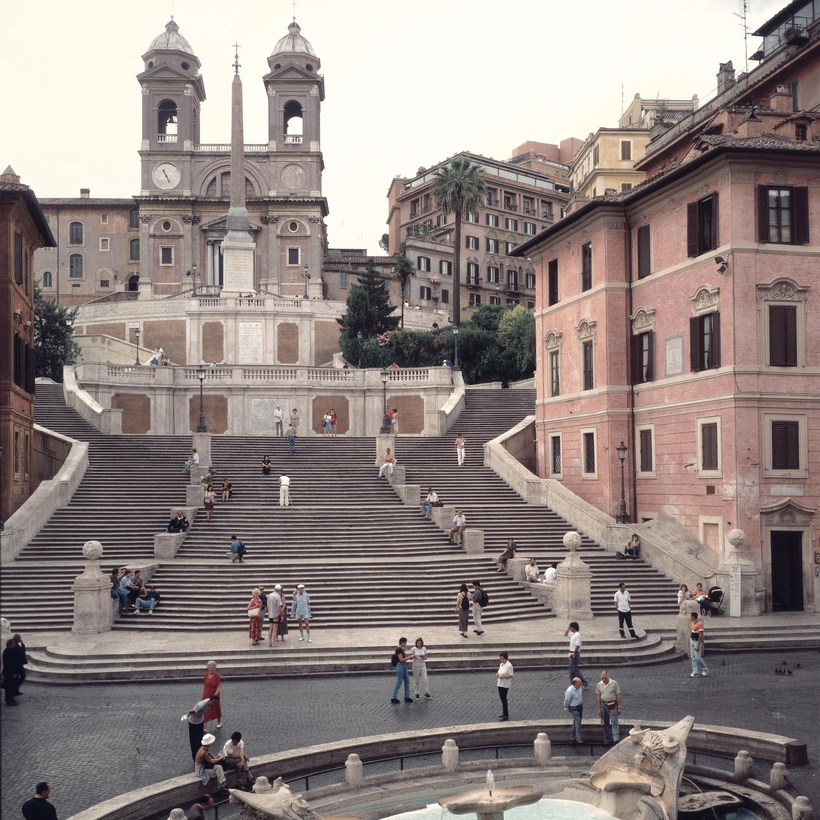The hordes of tourists taking selfies on the Spanish Steps in Rome last week did not seem perturbed by prosaic matters such as who owned the stone they stood on. Neither did the carabinieri prowling with the threat of a $280 fine for anyone who, emulating Audrey Hepburn, sat down.
But away from the bustle, Europe’s most famous staircase has become the subject of an international dispute between old rivals, after the resurfacing of a forgotten fact.
The Spanish Steps, vaunted alongside the Colosseum and St Peter’s Basilica as one of the “souls” of Rome, are not Italian, nor indeed Spanish. They are French.
A regulator in Paris earlier this month briefly mentioned the steps in a 107-page report into the management of France’s $223 million portfolio of property in central Rome. The assets include five churches, plus historic buildings rented as 180 flats, shops and offices that bring in about $5 million every year.

France’s top auditor of public bodies, the Court of Accounts, suggested they also include the Spanish Steps, which were built with French money in the 1720s. Apparently unaware that it might be controversial on the other side of the Alps, the court said the status of the steps would “benefit from being clarified”.
“It’s laughable,” said Fabio Rampelli, vice-president of the Italian Chamber of Deputies, the lower house of the national parliament. “Then we will send experts to the Louvre to make an up-to-date reconnaissance of the assets taken from Italy throughout history.” He was referring to the fact that countless paintings of Italian origin, most famously the Mona Lisa, reside in France, many of them looted by Napoleon’s men in one of the largest single displacements of art in history.
Italy’s tourism minister, Daniela Santanchè, said: “What would France be without Italy? They cannot do without our luxury, our works, our beauty. But now they exaggerate. They even want to take the Spanish Steps of Trinità dei Monti.”
The president of the Court of Accounts, Pierre Moscovici, told an Italian news agency he was “really very astonished” by the reaction to the report, saying: “I want to reassure our Italian friends … there is no intention to privatise or to empty the meaning that those properties have.”
On his tiled terrace in the center of Rome adorned with white busts, a few minutes’ walk from the steps, a French expert on the matter said of the Italian claim: “It’s completely false. The steps are ours.”
Gaël de Guichen, a former scientist in charge of studying the conservation of the Lascaux caves and their prehistoric paintings in France, is well placed to comment. He has lived in Rome since 1969 working for the International Centre for the Study of the Preservation and Restoration of Cultural Property, an intergovernmental body. Between 1993 and 2017 he was also a member of the foundation that owns French assets in Italy, the Pious Establishments.
“Between France and Italy, it’s a bit like France and England. We don’t like each other very much, but we like each other anyway,” said de Guichen.
Known by all in these cobbled streets as “the man in white” because of his outfits, de Guichen proceeds to give me a history lesson. In the late 15th century Rome was a pilgrimage site that grew up in swampland north of the ancient ruins. King Charles VIII of France bought a hill on its northernmost edge. There he and his son and successor Louis XII built France’s first royal convent on foreign soil and a church, the Trinità dei Monti or Trinity of the Mounts.
“What would France be without Italy? They cannot do without our luxury, our works, our beauty.”
But the walk to the convent was muddy and steep. So eventually, between 1723 and 1726, France built a grand set of steps, designed by an Italian architect but adorned with fleurs-de-lis and marked with two plaques declaring their Gallic origin. As king, Louis XIV had planned to mount a statue of himself there, although the Pope rebuffed the idea as too much of a French incursion. “What more could they have done?” said de Guichen.
At first only French nuns and monks climbed the steps. But in time, everyone did. The Spanish, whose embassy was at their foot, in the Piazza di Spagna, or Spanish Square, were incensed to see above them every day such a great monument to an old enemy. Claiming the entire quarter as their own, they sent police to guard the steps.
Over the centuries English speakers began referring to them as “Spanish Steps”. In 1821 the poet John Keats died while living in a house built as part of the original plans and also decorated with fleurs-de-lis.
Rome has long claimed them as a public space. In the 20th century it began running their upkeep, helped latterly by sponsors including the luxury jeweler Bulgari which paid for a $1.6 million tidy-up in 2015.
In 2019 the city introduced fines of up to $280 for sitting down, and up to $450 for dirtying the steps even by dropping food.
There were no measures to stop Audrey Hepburn from sitting on the steps and eating a gelato with Gregory Peck in the 1953 film Roman Holiday. But perhaps she should have bitten into a croissant instead.
Richard Assheton is a writer for The Times and The Sunday Times of London


